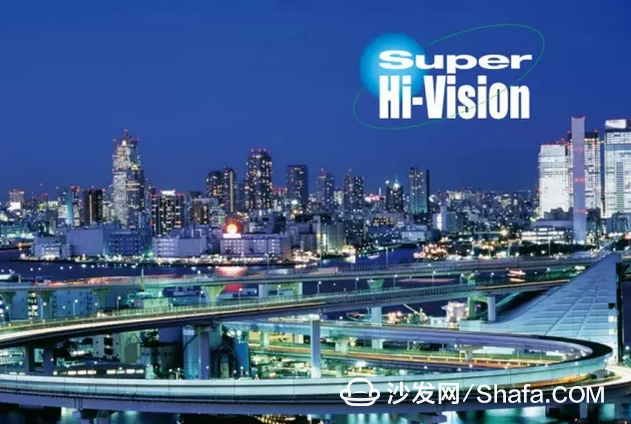8K, maybe it's time to think about it

In the past five years, companies such as Ikegami, Hitachi, and RED have exhibited 8K cameras at various exhibitions around the world. You can even get an 8K test generation system from For-A, while other companies such as the Japanese control system, NEC, JVR, and Canon are also speeding up the development of 8K.
At this year's NAB show, Ikegami will introduce the latest 2/3-inch 8K camcorder and display its samples on a 55-inch 8K monitor. Hitachi will exhibit the SK-UHD8000 camera. Sony has also joined NexTV-F, which is backed by the Japanese government, to conduct R&D on 8K. Other members of the organization include NHK, BBC's R&D department, and Olympic Broadcast Services (OBS).
On the consumer side, 8K TVs from LG, Samsung, and Hisense have been unveiled at CES for two consecutive years, and Canon has produced up to 50 million-pixel digital SLRs that can produce images that are higher than 8K quality. (But currently the camera only supports 4K video)
8K Development Status Before we understand the development of 8K, we need to understand the current status of 4K. Currently, cameras are ready, and manufacturers are still pushing different transmission methods from IP to coaxial 12G.
In terms of resolution, 8K is 16 times that of 1080p HD. Although there is currently no general market term for 8K in the United States (for example, UHD is for 4K), in Japan, NHK uses “Super Hi-Vision†(SHV) to refer to this high resolution format. The current 8K SHV standard is an aspect ratio of 16:9, 7680*4320 pixels, and the number of pixels is approximately 33 million.
In addition to ultra-high resolution, the SHV is also equipped with a 22.2-channel sound system. The technology leader NHK has used this technology to record professional league games and Super Bowls in the United States. Last summer, NHK broadcasted the Rio Olympic Games in Brazil using its fourth-generation SHK-810 camera. NHK said that in the next three years, the 2020 Tokyo Olympics will be broadcast to viewers all over the world in the form of a complete 8K format.
Bandwidth limitations Like 4K, the main concern for 8K is bandwidth. Due to the high bit rate and large bandwidth requirements, the initial compression of the signal is necessary. The uncompressed 8K data rate is as high as 48 Gbps, and it needs to be halved after compression. Even if 8K is compressed, its data volume is still twice that of 4K (12K if 4K is uncompressed).
As video technology moves from HD to 4K and eventually reaches 8K, higher resolution may already exceed the needs of ordinary family viewers; unless the image is displayed on a screen that exceeds 65 inches, the effect of 8K-level resolution is not obvious. (Or not obvious enough). Therefore, the biggest influence of 8K is the large screen of a theater or gymnasium. These public facing display screens can easily exceed 50 or even 100 feet in size.
The problem with 8K on the production side is mainly the amount of space needed to store data. In 8K production, we must consider the space and cost of storage. The cost of 8K video capture is directly related to the required storage space. This also requires careful resource allocation.
As the bandwidth becomes more and more valuable and the frequency spectrum continues to shrink, the realization of the 8K broadcasting and television form will become more difficult. Although ATSC 3.0 has been able to handle 4K, the spread of the standard will take several years; at the same time, cable and satellite providers are also aware of the large amount of bandwidth and data required. If you use the IP system completely, you need not only large bandwidth, but also extremely stable data throughput during live broadcasting. In spite of this, the Japanese are still working hard for the 8K Tokyo Olympic Games in 2020. Therefore, it may be time to consider 8K.
Smart TV/box information can focus on smart TV information network sofa butler (http://), China's influential TV box and smart TV website, providing information, communication, TV boxes, smart TVs, smart TV software, etc. Answering questions.
Mobile Phone Support Middle Plate is the important accessories for mobile phone and also is a key part of the sandwich structure of a mobile phone. It supports and carry the key components of the core, which has many requirements in terms of strength, structure and heat dissipation.
We custom Phone Plate Frame with drawings provided by customers. The raw material we use for etched Phone Support Middle Plate is SUS304 stainless steel. We are equipped with professional metal etching equipment and exposure development equipment. We have fine metal etching technology and can guarantee that our products have high precision.
SUS304 Customized Logo,Diverse Patterns Customized Logo,Etched Phone Support Middle Plate,Custom Phone Plate Frame
SHAOXING HUALI ELECTRONICS CO., LTD. , https://www.cnsxhuali.com